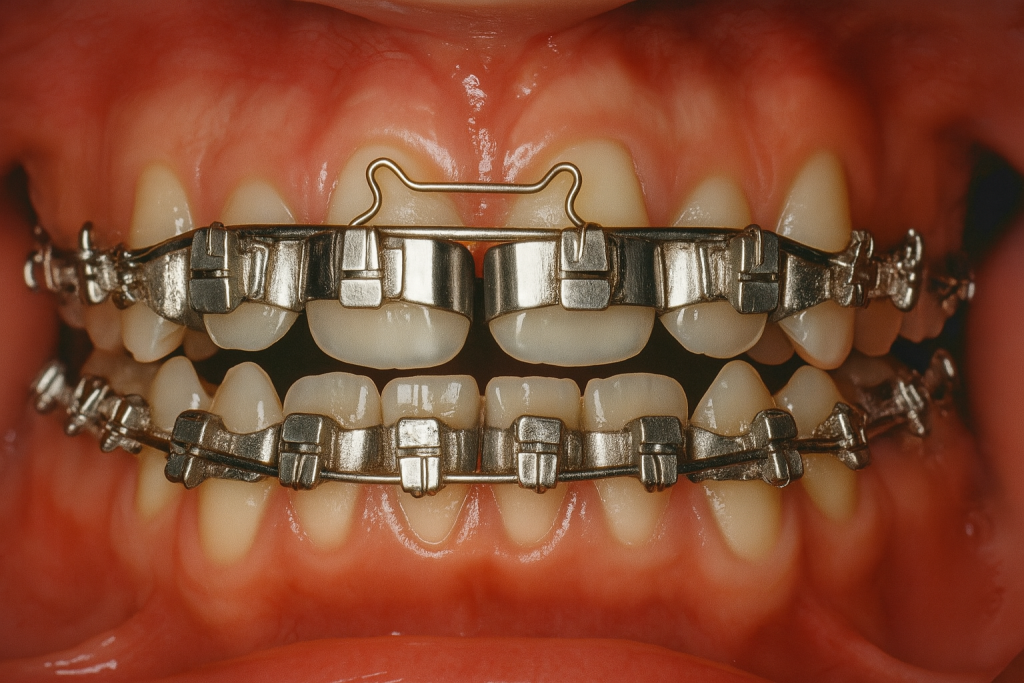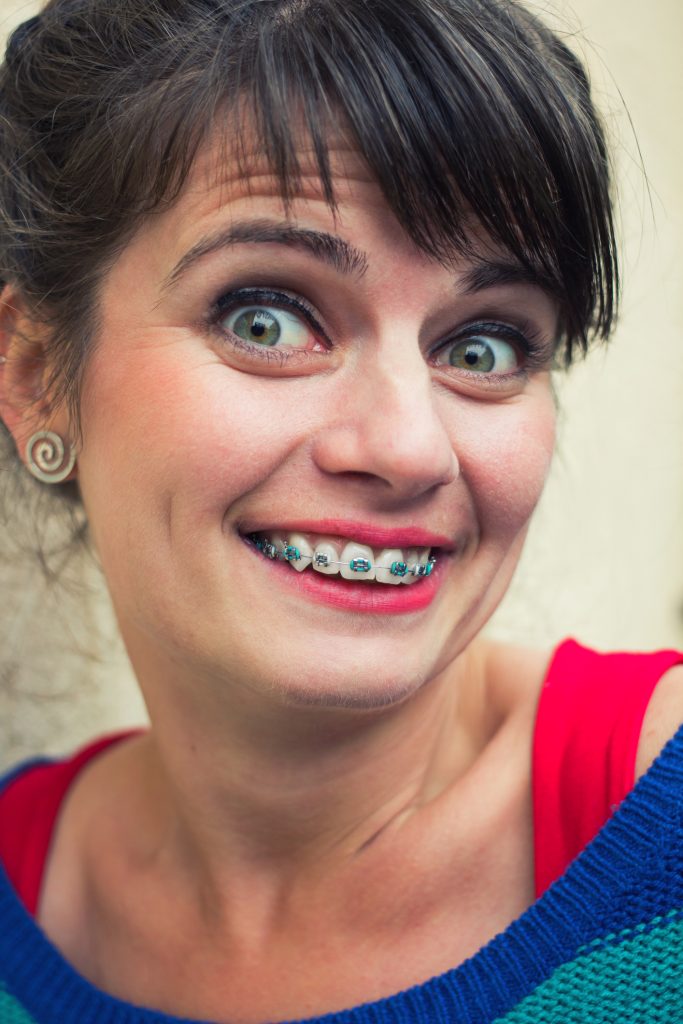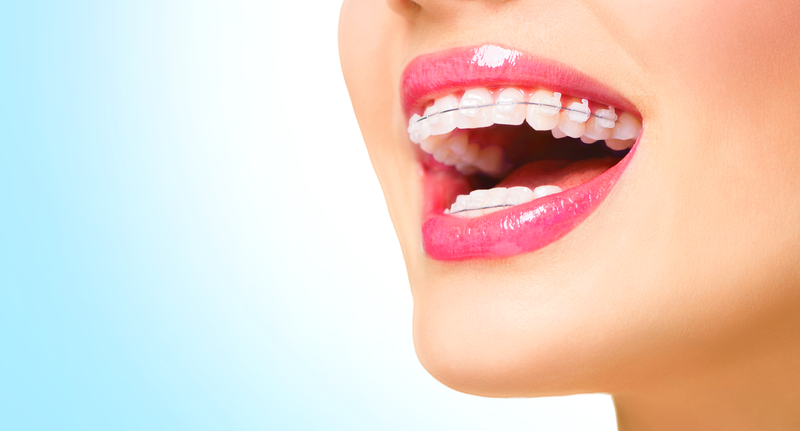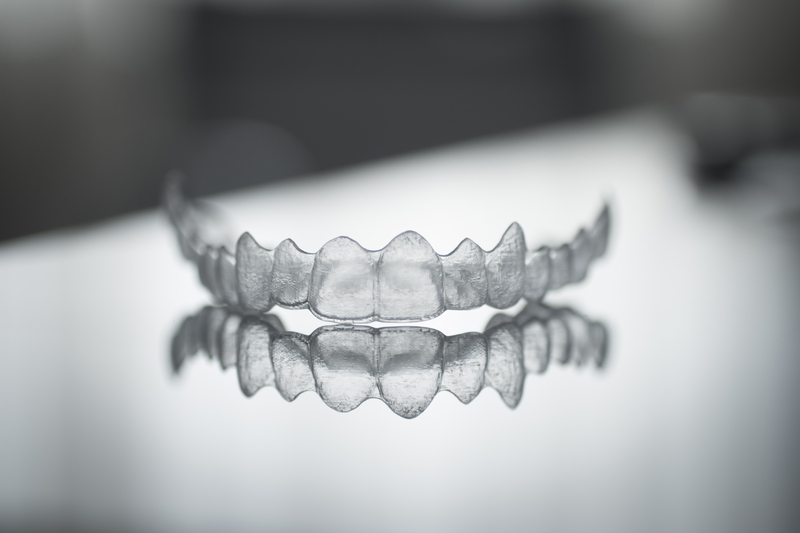Subtotal $0.00
Braces Through the Decades: Which Style Would You Have Worn?
Key Takeaways
- Orthodontics evolved from pure function to lifestyle integration— the field transformed from 1970s bulky metal bands focused solely on effectiveness to today’s AI-powered clear aligners that balance clinical results with comfort, aesthetics, and patient lifestyle needs.
- Each decade’s innovations mirrored cultural values of the time— from 80s colorful self-expression to 90s professional discretion to 2000s digital convenience, orthodontic advances have consistently reflected broader societal preferences and technological capabilities.
- Modern technology has revolutionized treatment speed and precision— what once required 3-4 years with frequent adjustments can now be completed in 6-12 months using digital planning, advanced materials, and predictive software, making orthodontics more efficient than ever.
- Adult treatment exploded due to discrete, professional-friendly options— invisible aligners and ceramic brackets opened orthodontics to millions of adults who previously avoided treatment, with adult patients now representing 25% of all orthodontic cases and growing rapidly.
- Complete customization is now the standard— today’s patients can choose from invisible aligners, hidden lingual braces, ceramic brackets, or traditional metal, with treatment plans tailored to individual lifestyles, budgets, and aesthetic preferences rather than one-size-fits-all approaches.
Orthodontics has come a long way—not just in how we straighten teeth, but in how we think about smiles, style, and comfort. From bulky metal bands in the 1970s to today’s AI-powered clear aligners, every decade brought revolutionary changes to the world of tooth straightening. Let’s take a fascinating journey through orthodontic history and explore what braces looked like in each era—and maybe even discover which style would’ve matched your personality.
The Foundation Years: Pre-1970s
Before we dive into the modern era, it’s worth noting that orthodontics has ancient roots. Archaeological evidence shows that even the Egyptians and Romans attempted to straighten teeth using crude metal wires and bands. However, modern orthodontics as we know it really began taking shape in the early 1900s with Edward Angle’s classification system for malocclusions.
The mid-20th century saw the development of stainless steel brackets and the first systematic approaches to tooth movement, setting the stage for the orthodontic boom of the 1970s.
The 1970s: Metal Mouths and Full Bands
The era when subtlety wasn’t even a consideration
If you were rocking braces in the 1970s, you weren’t hiding them—and frankly, you couldn’t even if you tried.
Back then, orthodontic treatment meant full metal bands that wrapped around each individual tooth like tiny silver crowns. These substantial metal rings were connected by thick, rigid archwires and adjusted with tools that looked more like they belonged in a mechanic’s toolbox than a dentist’s office. The process of getting these bands fitted often required separators (small rubber rings) to create space between teeth, making the entire experience quite uncomfortable.
Orthodontic visits were dreaded affairs that often meant significant discomfort—not only from the adjustments but from the sheer bulkiness and constant pressure caused by all that hardware. Treatment times averaged 3-4 years, and emergency visits for broken wires or loose bands were common. The goal was effective tooth movement, and while it worked, patient comfort and aesthetics weren’t exactly top priorities.
Fun fact: The term “metal mouth” became popular during this decade, and many teens wore their braces like a badge of honor since everyone knew the journey to straight teeth required serious commitment.
Signature style: Heavy-duty metal with zero attempt to blend in. If you were wearing braces in the 70s, you owned it—because there was no hiding it.

The 1980s: The Rise of Brackets (and Big Hair)
When orthodontics got its first major makeover
Say hello to a sleeker smile (relatively speaking) and the beginning of patient choice in orthodontics.
The 80s brought a revolutionary shift with the widespread adoption of brackets bonded directly to the front of teeth, largely replacing the cumbersome full metal bands of the 70s. This innovation, pioneered by orthodontists like Dr. Damon Straight, made braces significantly more comfortable and less invasive while dramatically reducing the bulk and overall hardware in patients’ mouths.
But perhaps the most exciting development was the introduction of colored elastic ligatures (the tiny rubber bands that hold the wire to the bracket). For the first time, patients could personalize their braces and express their personality. Suddenly, orthodontic appointments became opportunities to coordinate your mouth hardware with your scrunchie, leg warmers, or favorite neon accessories.
The 80s also saw improvements in wire technology, with the introduction of heat-activated nickel-titanium wires that provided gentler, more consistent pressure for tooth movement.
Cultural impact: Braces became somewhat trendy among teens, with some even requesting fake braces to fit in with their peers. The decade’s emphasis on self-expression extended to orthodontics.
Signature style: Shiny silver brackets with bold, colorful elastics—and maybe even a retainer wrapped in glitter if you were feeling extra stylish.

The 1990s: Smaller Braces and Ceramic Chic
The decade that made discretion fashionable
By the 90s, orthodontic technology had caught up with the era’s growing emphasis on personal style—and braces were finally becoming more discreet.
Mini brackets became the new standard, significantly reducing both the size and visibility of traditional braces. These smaller brackets weren’t just about aesthetics; they also improved oral hygiene by making it easier to clean around the hardware and reduced the likelihood of white spot lesions (permanent staining) on teeth.
For patients who didn’t want any metal showing at all, ceramic braces offered a revolutionary tooth-colored option that virtually disappeared against natural enamel. While slightly more expensive and somewhat more fragile than metal brackets, ceramic braces gave image-conscious teens and adults a way to straighten their teeth without the metallic smile.
The 90s also introduced significant improvements in wire technology, including superelastic wires that maintained consistent force levels and reduced the need for frequent adjustments. Treatment times began to decrease, with many cases completing in 18-24 months.
Retainers got their own makeover during this decade, with patients choosing wild patterns, colors, and even holographic designs for their post-treatment gear.
Notable development: The introduction of computer-aided treatment planning began during this decade, allowing orthodontists to better predict treatment outcomes.
Signature style: Sleek, minimalist brackets available in clear or ceramic for the trend-conscious, with a growing emphasis on aesthetics over obviously visible metal.

The 2000s: Clear Choices and Invisalign’s Digital Revolution
The decade that changed everything
Cue the birth of an orthodontic revolution: Invisalign entered the scene in 1999 and gained serious momentum throughout the early 2000s, fundamentally changing how people thought about teeth straightening.
For the first time in orthodontic history, patients could straighten their teeth with clear, removable aligners—no wires, no brackets, no food restrictions, and almost no one knowing they were in treatment. Invisalign’s digital precision, using 3D computer modeling and manufacturing, meant treatments could be planned with unprecedented accuracy.
This breakthrough technology opened orthodontics to millions of adults who had avoided treatment due to professional or social concerns about visible braces. The ability to remove aligners for important meetings, photos, or special occasions made orthodontic treatment compatible with adult lifestyles in ways traditional braces never could.
Traditional braces didn’t stand still during this decade either. Self-ligating brackets (which didn’t require elastic ties) and advanced titanium alloys for archwires made treatments faster, more comfortable, and more efficient. Some systems claimed to reduce treatment time by up to 25%.
Market impact: Adult orthodontic treatment increased by over 40% during this decade, largely due to clear aligner technology.
Signature style: Stealth mode activated. Whether you opted for Invisalign’s invisible approach or ultra-low-profile traditional brackets, orthodontics in the 2000s was all about subtlety and convenience.

The 2010s–Present: The Era of Customization, AI, and Unprecedented Choice
Where technology meets personalization
Today’s orthodontic landscape offers more advanced, personalized, and efficient options than ever before, with artificial intelligence and digital technology revolutionizing every aspect of treatment.
Invisalign has evolved into a comprehensive treatment system, now capable of handling complex cases that once required traditional braces. Advanced features like SmartTrack material, precision attachments, and weekly aligner changes have made treatment faster and more predictable. Digital scanning has largely replaced messy impressions, and AI-powered treatment planning can simulate your entire journey before you even start.
Traditional braces have undergone their own renaissance. Options now include:
- Clear ceramic braces that are virtually invisible
- Gold brackets for those who want to make a statement
- Lingual braces that attach to the back of teeth, completely hidden from view
- Self-ligating systems that reduce friction and appointment frequency
- Customized brackets manufactured specifically for each patient’s teeth
The rise of direct-to-consumer orthodontics has also emerged, offering at-home treatment options, though these come with important considerations about professional supervision and complex case management.
Technological marvels: Some practices now use AI to predict treatment outcomes, 3D printing for custom appliances, and even photobiomodulation (light therapy) to accelerate tooth movement.
Treatment efficiency: Many straightforward cases can now be completed in 6-12 months, with some systems promising results in as little as 3-4 months for minor corrections.
Signature style: Complete customization. Whether you’re team clear aligner, ceramic chic, invisible lingual, or statement-making gold, modern orthodontics is entirely about what works for your lifestyle, budget, and aesthetic preferences.
The Psychology of Smile Evolution
What’s fascinating about this orthodontic journey is how it mirrors broader cultural shifts in self-expression, technology adoption, and healthcare consumerism. Each decade’s orthodontic innovations reflected the era’s values:
- 70s: Function over form, acceptance of visible medical treatment
- 80s: Beginning of personalization and self-expression
- 90s: Growing emphasis on discretion and professional appearance
- 2000s: Technology-driven solutions and adult market expansion
- 2010s-Present: Complete customization and lifestyle integration
Looking Forward: The Future of Orthodontics
Emerging technologies suggest even more exciting developments ahead:
- Bioengineered tooth movement using growth factors to accelerate treatment
- Smart braces with embedded sensors monitoring progress
- Virtual reality treatment planning for enhanced patient experience
- Regenerative orthodontics focusing on optimal jaw development from early ages
Which Decade Matches Your Smile Style?
Are you a 70s Trailblazer? You don’t mind standing out and appreciate tried-and-true methods, even if they’re not the most comfortable.
An 80s Expresser? You love adding personality to everything, including medical treatments, and aren’t afraid to coordinate your accessories.
A 90s Minimalist? You prefer subtle improvements and value discretion in your personal care choices.
A 2000s Innovator? You’re excited by new technology and appreciate solutions that fit seamlessly into your lifestyle.
A Modern Customizer? You want exactly what works for your unique situation, with all options on the table.
While orthodontics has evolved tremendously over the decades, the fundamental goal remains unchanged: creating confident, healthy smiles that last a lifetime. Thanks to today’s remarkable advancements, you no longer have to sacrifice comfort, appearance, or lifestyle to achieve the smile you’ve always wanted. The only question left is: which style speaks to you?
Ready to find your perfect decade of braces—minus the throwback discomfort?
Schedule your free consultation at Masterpiece Smiles Orthodontics and explore the modern options that fit your lifestyle, your look, and your smile goals.





Comments are closed